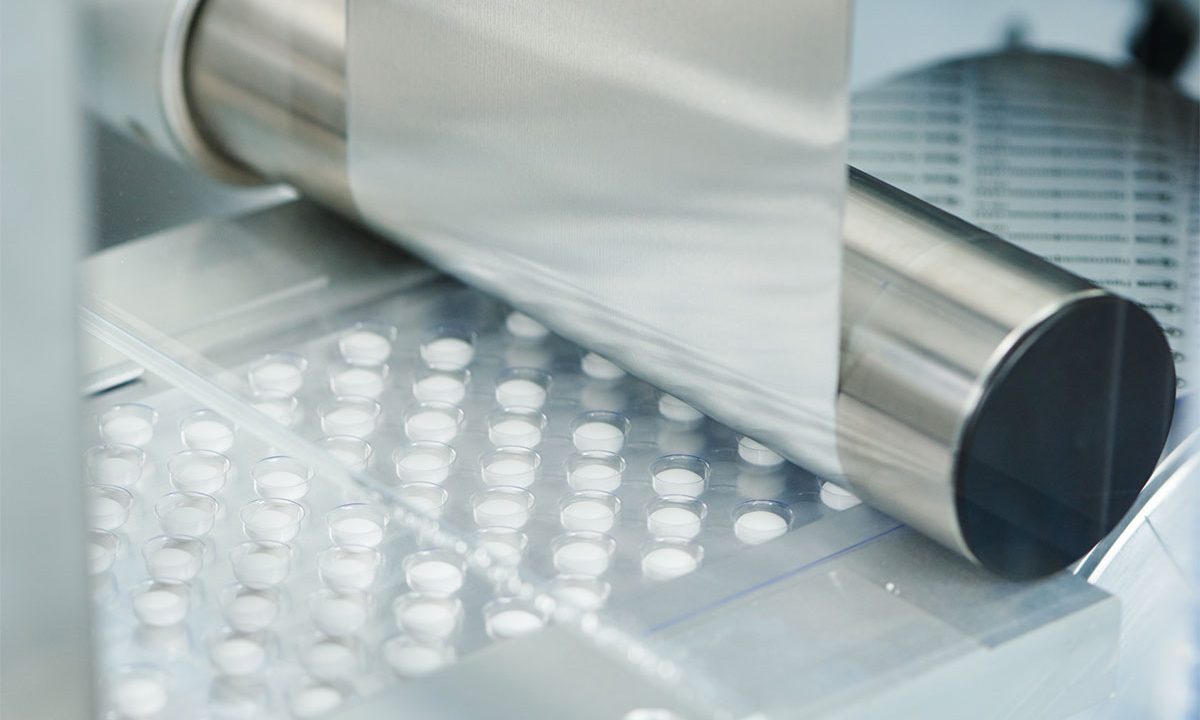In the food and pharmaceutical industry, the quality of the product depends on the packaging that carries it. Hence, keeping the quality of packaging intact is an important factor that governs the successes and failures in the industry. The packaging has multiple utilities with pharmaceuticals. Because several brands in the industry sell paracetamol, while making a distinction from other products in the market, the packaging must also make sure that the product inside is easily accessible to the end-user.
Medicines and supplements especially need pharmaceutical packaging and blisters to perform, to keep their adequacy, effectiveness and freshness unimpaired. There are several regulations to maintain user safety and the safety of children. Bottle, box or alu-alu blister packaging, if any case can be opened like it’s child play, the child might be poisoned fatally. In heavy pharmaceuticals, all product packaging is required to have a child-safe feature. The high tensile lid in alu-alu blister packaging, for example, makes the packaging resistant to pressure from a child’s hands.
Complying with the safety regulations of pharmaceuticals, the packaging has to always go through tests that ensure long-lasting quality without being affected by rough handling, transportation mishaps or environmental changes. So, quality assurance tests are necessary to double-check the efficiency of packaging. Here’s how quality assurance works for pharmaceutical packaging-
Ideal Requirements for Packaging
To know what to test in a batch of packaged goods, one must know the industry-standard requirements from the packaging. Pharmaceutical packaging is a very complex stage which requires an impeccable design that can be practically created and doesn’t fail at physical and chemical tests. Here’s what a packaging must provide-
- It must always provide a holding space for the product without losing the integrity of the product in a way of leakage, spoilage, or water permeability.
- It must always create a barrier between the product and the environmental factors like moisture, air, microorganisms and sunlight while in storage.
- Every seal or cap in the packaging must be airtight and shall not allow gasses to permeate through.
- The packaging design must be strengthened enough to withstand the shocks that come from human handling and transportation.
- Packaging must have perfect facilitation for removal of product and safe intake without spillage or overdose.
- The packaging material shall always be chosen in a way that it doesn’t react or interfere with the chemical composition of the consumables they hold.
- Cost of packaging material shall always be lower than the cost of the product while maintaining quality throughout the manufacturing process.
- The design must maintain a distinct look from the other brands and shall be unique to be identified easily as the right medicine by the patients and caretakers.
- Packaging material shall be non-volatile and must have the highest melting or inflammation point possible, to protect the product inside from sudden temperature changes.
Packaging materials have the most important job in the pharmaceutical sector, to preserve the medicines and supplements and increase their shelf life to the maximum. This is why the testing phase has to be planned.
Procedures for Package Testing
Quality assurance tests for packaging have to be divided into two sub-groups. One group isolates the packaging material from the whole manufacturing process and is checked for qualities like tensile strength in alu-alu blisters or contamination in PVC packaging material. Another batch of tests is conducted on the whole packaged and finished product to check for durability, leakage, or gaseous penetration. The tests are concluded in the manner below-
- Testing material- There are generally three regular kinds of tests done for the material.
- Chemical-chemical testing using different indicator compounds or stimulants is done to test for chlorides and sulfates in paper and box materials, the chemical composition of plastic material and the alkalinity of glass material.
- Mechanical- these tests are conducted before making design decisions so that the effects of pressure, folding, forming, etc. can be studied on the material.
- Environmental- environmental testing is conducted by standard procedures that check the rate of water absorption, the permeability of water vapour, the appearance of gasses when affected by heat and the effects of light.
- Testing finished packaging- Finished packaging is tested for two of the most common categories of hazards- mechanical (shock, compression, friction, puncture, etc.) and environmental (temperature, light, vapours, moisture, pressure, contamination, etc.)
- Mechanical- tests are conducted on packaging containing the product to see the effects of transportation hazards under a mechanical simulation and to compare the efficiency rates of different materials.
- Environmental- environmental situations are artificially created and the packages are subjected to the conditions to check for water sorption, leakage of product from heat, oxidation of the product through the seal, or reaction of product in light.
- Testing blister packaging- Blister packs are tested for perfect sealing with the following steps:
- The blister strips are first placed in a desiccator and a vacuum is applied, The vacuum is then released and blisters are removed.
- Humidity in the air sticks as moisture on the strips when a vacuum is applied, the moisture is wiped off with paper tissues.
- The product inside the alu-alu or PVC blister packaging is then removed and checked for moisture if any has seeped through the seal. If the product is dry, it means the material and blister packaging machine have achieved proper sealing.
Packaging material is tested in the first go when it arrives at the facility to remove quality issues that might be a hindrance to the manufacturing process. However, when it comes to finished packaging, the tests conducted are also aimed at the finishing of the material and its durability through transportation and handling.
If the packaging doesn’t pass the durability checks, the material may be changed again to match the efficiency required by the design. Most packaging machines like Accupack’s Victory, are adaptable to different material types and sealing designs. Contact Accupack to know more about your perfect material.



